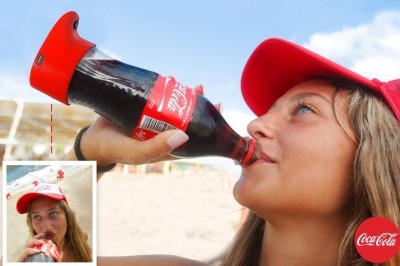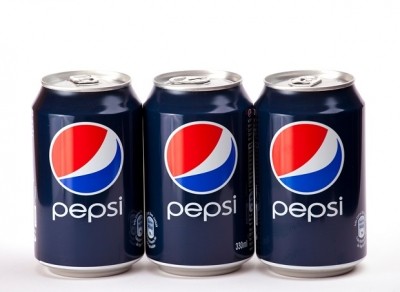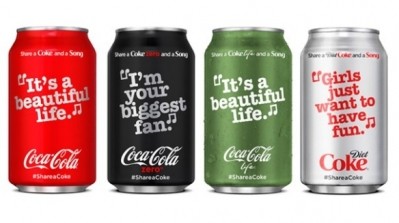PepsiCo rolls out ‘PepsiMoji’ campaign, as packaging gets more creative and personal

An emoji is a small digital image or icon used to express an idea or emotion in electronic communication.
The PepsiMoji designs are emojis which draw on the blue, red and white colors associated with the brand, as well as the circular shape of the Pepsi icon.
The PepsiMoji campaign includes the designs across the full Pepsi portfolio, including Pepsi, Pepsi MAX and Diet Pepsi/Pepsi Light.
Beyond packaging, PepsiCo says it will ‘unleash emojis through unexpected campaign elements,’ including TV spots, a PepsiMoji keyboard that can be downloaded as an app, and digital and social engagement and content.
The PepsiMoji campaign is set to be rolled out across more than 100 markets this year.
Canada, Russia, Pakistan and Thailand are among the countries that began introducing the campaign in 2015, after Pepsi launched a short film for World Emoji Day on July 17 2015.
PepsiCo says one of the strengths of the campaign is the universal language that emojis offer.
What is an emoji?
An emoji is a small digital image or icon used to express an idea or emotion in electronic communication.
Emojis have been around since the 1990s, but 2015 saw a big increase in usage, says Oxford Dictionaries. “Emojis are no longer the preserve of texting teens: instead, they have been embraced as a nuanced form of expression, and one which can cross language barriers.”
“The PepsiCo Design & Innovation Center created hundreds of proprietary PepsiMoji designs – depicting both globally relevant and locally significant imagery — for a universal language system for the brand,” explains PepsiCo.
“All unique PepsiMoji designs incorporate the essence of Pepsi – the brand’s iconic globe shape and color palette of blue, red and white.
“Along with the core universal set of emoji, regional markets are empowered to create their own set of relevant emoji.”
For example, the PepsiMoji campaign in Australia (launched in February) includes emojis with cork hats and Australian flags.
Big cola: a need to stay relevant
Howard Telford, senior beverages analyst at Euromonitor International, said such creativity and customization is accompanying a shift to single serve portion sizes, with the bottle or can more prominent on shelves and therefore becoming more important from a marketing point of view.
“Across markets, both Coca-Cola and Pepsi have more trouble engaging younger consumers with their flagship cola brands,” he said. “In fact, it seems like other brands in their portfolios – for example Mountain Dew - have proved to be more adept at reaching and staying relevant with a younger demographic than big cola.
“So what can they do to keep these brands relevant in an era of volume declines? One solution seems to be creativity and customization with package design. From a margin perspective, we’re seeing greater industry focus on smaller, single serve transactions and less focus on value multipacks as volumes in cola decline.
“From a marketing perspective, this shift to single serve transactions presents an opportunity to innovate with design since the bottle or can is more visible and important.”
Pepsi has done well at recognizing the importance of design and creativity, for example by hiring a ‘Chief Design Officer’ in 2012, added Telford.
Selfie cans and unique bottles
Earlier this year Coca-Cola South Pacific launched ‘selfie cans’ in Australia: packaging it hopes will encourage customers to engage with the packaging and post creative efforts on social media along with the campaign hashtag ‘Be More Fanta.’ The concept has previously been run in France, reaching 6.5m teenagers in the first two weeks.
Another example is Coca-Cola’s Share a Coke campaign, a globally successful campaign which printed people’s names on bottles.
Diet Coke’s ‘It’s mine’ program started distributing millions of uniquely designed glass contour bottles in the US in February. Diet coke created 36 base designs drawing on the ‘bubbles, fizz and spirit’ of Diet Coke; and then used software to auto-generate millions of new graphics. Coca-Cola Israel also used the technology for a similar promotion in 2014.
“The ‘Say it with Pepsi’ [PepsiMoji] emoji campaign seems to be in a similar vein,” said Telford. “Something unique and unexpected that may make the consumer stop and engage with the brand in their local convenience store - perhaps share a picture of the package online - and perhaps provide a small volume lift over the important summer period."








